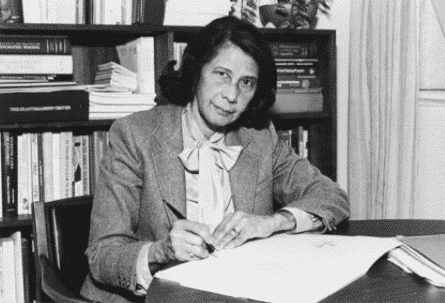
Stutterer by Benjamin Cleary
Ever make a snap judgment about someone—only to realize you had them all wrong? What about being on the receiving end of someone else’s misperception? Ever find yourself struggling to communicate? What about times when you’re stuck in your own head, sure that everyone is judging you?
After watching the Oscar-winning short Stutterer in a recent community conversation event, we explored these questions and more. We helped each other think about the different forces that drive us apart and the possibilities for healing these divisions. This was the third event in our five-part film and conversation series The Human Condition(ed): Exploring our Social Connections and Disconnections. Scroll down the page to find some of the ideas that emerged from our conversations.
Speaking of forging connections with others, our exploratory conversations are a great way to do it. Please join us and register for our next film and conversation event, The Neighbor’s Window on November 4th at 1pm ET.
Here’s some of what we explored after watching Stutterer.
What holds us apart and feeds into misperceptions of each other?
- Self-protection, fear, and hesitancy to take risks
- Impatience and failure to imagine what it is like for others
- Misalignments of our perceptions and reality
- Self-perceptions can get in the way of connection: we get blocked by self-criticism and misperceive how others perceive us
- Our egos get in the way, leading us to be overly self-protective rather than being open to others
- Language difficulties
- The failure of spoken language—the inability to speak in the moment
- Language differences
- Speech disabilities and hearing impairments
- Ability differences that make you feel like you don’t belong or that block your full participation in society as it is set up
- Having a need that is delegitimized by society or invisible to others
- Various institutions are set up only for certain kinds of people; e.g., technology is often not set up for older people or people with different communication needs
- People might choose to hide their ability differences to avoid stigmas and social prejudices
- An invisible disability can be harder, because you have to constantly explain it
- The prevalence of isolation
- Communication difficulties make us more isolated
- We can be isolated by our living situations, life experiences, languages, and cultures
- The rise of individualism and our infrastructure over emphasizes it (“you have to be this independent island with anything you need”)
- Violence drives us apart (g., the domestic abuse situation at the bus stop)
- Age—at different times of life we you have greater self-doubts and different levels of openness toward others
What can help reconnect us, heal us these disconnections?
- Developing the willingness to take risks to be open toward one another
- The critical importance of acceptance—of others and of self
- Being courageous—conquering your own fears
- The ability to connect via shared cultural experiences that can cut through language barriers
- Music (especially), dance, and the arts in general
- Music communicates to us immediately and at so many different levels—we need the same immediacy with each other.
- Shared food and hospitality
- The universal language of love–a look, a hug, a handshake, a kind gesture or gift, encouragement
- Being practical and learning to communicate across cultures. E.g., the main character was very practical and learning sign language in order to communicate when other methods of communication broke down
- Being proactive to find the different resources available to help meet communication needs
- The society needs to make accommodations for people with different communication needs—it shouldn’t be all on the individual
- Build institutions and structure communities to help people with different ability statuses to live their best lives and be a full participant in society
- Schools need to be set up for meeting diverse needs of students to help them communicate. Our sense of self is influenced by our school experiences—so make sure school experiences are focused on developing a positive sense of self and our abilities.
- Public policy can play a role in supporting development of technology to aid in connection and to address disabilities
- Families are important support systems and can help connect people to the world (e.g. the loving, patient, and supporting father in the film)
- Role models–individuals can inspire others (e.g. Joe Biden inspiring a boy to manage his own stutter)
- Increase public understanding of and empathy for differences, focusing attention on the need for accommodations and acceptance
- Making others sensitive and aware of the needs of others, including people with disabilities. We need to be open to each other about our differences, about who we are.
- Being less judgmental. Be open and understand that people are different
- Fostering patience and imagination (imagine other perspectives)
- Encourage a culture of helping others, of patience, of acceptance of differences
- Abolish stigma. We need an active focus on dismantling stigmas, a change in cultural expectations
- There are many ways to communicate—we have to be open to using them
- Using technology to connect with people with different abilities and similar interests, allowing us to connect in more ways than in the past
- Therapies can help with speech disabilities
- Meditation and mindfulness are helpful—could have policies to encourage these practices (e.g. policies that focusing on slower pace of life and a better work/life balance)
- Face-to-face encounters can help foster connection
- Acknowledge and greet people, smile, unsolicited compliments, small kindnesses.
- Eye contact. Genuine listening—giving space to the other (learn how to listen without planning what you’re going to say next)
- When they see each other at the end of the film—very powerful wordless communication



